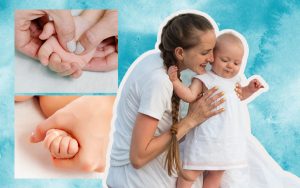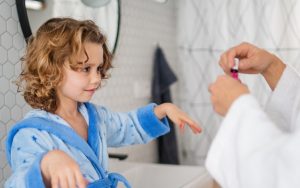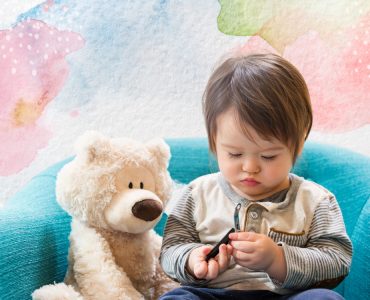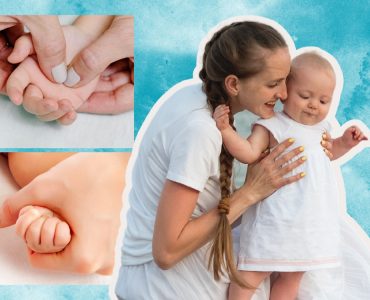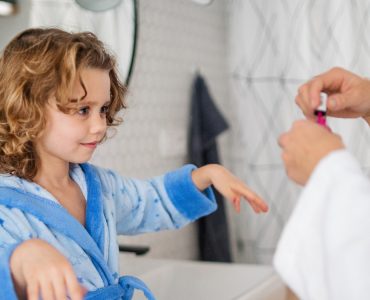Nail polish is a popular beauty accessory that allows individuals to express their creativity and style. However, when it comes to our little ones, especially toddlers, concerns about their safety and well-being become paramount. One particular aspect that often raises questions is the acrylic smell emanating from nail polish. Is it harmful to toddlers? Should parents be worried?
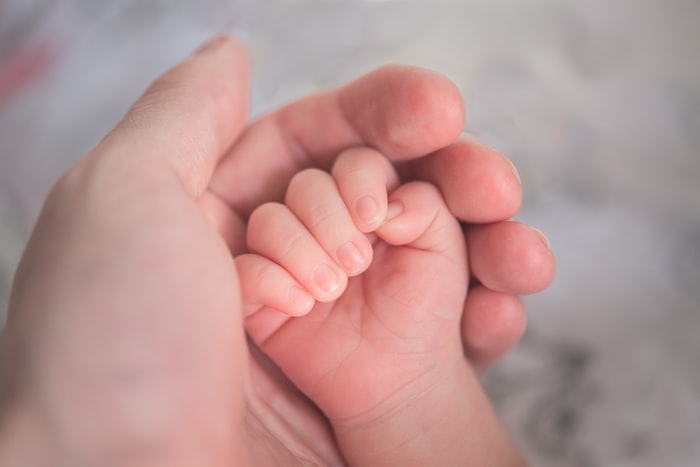
In this blog post, we will delve into the topic of acrylic smell and its potential impact on toddlers. By understanding the composition of nail polish, the associated risks, and safety measures, we aim to provide parents with valuable insights to make informed decisions about nail polish use for their little ones.
Potential Health Risks for Toddlers
As parents, we strive to create a safe environment for our toddlers, shielding them from potential harm. When it comes to nail polish and the associated acrylic smell, it is essential to understand the potential health risks that may affect our little ones. While the smell itself may not be directly harmful, it is indicative of certain chemical components present in nail polish that can pose risks to toddlers.
Inhalation Risks from Acrylic Smell
When nail polish is applied, the chemicals in the polish can release volatile organic compounds (VOCs) into the air, leading to the distinctive acrylic smell. Toddlers, with their developing respiratory systems, may be more susceptible to the inhalation of these VOCs. Prolonged exposure to high levels of VOCs can irritate the respiratory tract and may even contribute to respiratory issues such as asthma or allergies.
Skin Contact Risks
Toddlers often explore their surroundings through touch, and if they come into direct contact with nail polish containing harmful chemicals, it can potentially lead to skin irritation or allergic reactions. Certain chemicals present in nail polish, such as formaldehyde, toluene, and dibutyl phthalate (DBP), are known skin irritants and may cause redness, itching, or rashes on sensitive toddler skin.
Ingestion Risks
Toddlers are naturally curious and may inadvertently put their hands or fingers into their mouths, leading to the ingestion of nail polish chemicals. While nail polish is not intended for ingestion, it is crucial to note that some formulas contain toxic substances. Ingesting nail polish can result in digestive issues, nausea, or poisoning, depending on the chemical composition.
It is important to remember that the severity of these risks depends on various factors such as the frequency and duration of exposure, the specific chemical composition of the nail polish, and the individual sensitivity of the toddler. However, even low-level exposures to harmful chemicals over an extended period can accumulate and potentially have adverse effects on a toddler’s health.
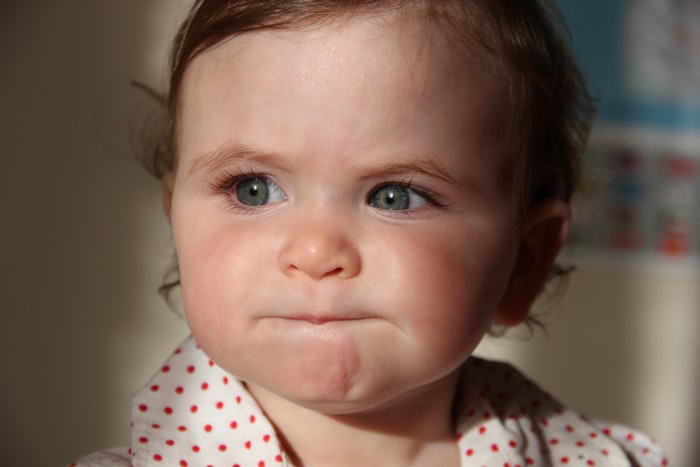
Safety Measures for Toddlers and Nail Polish
When it comes to the safety of our toddlers, it is important to be proactive and take necessary precautions when using nail polish. By implementing the following safety measures, we can minimize potential risks and create a safer environment for our little ones.
Choose Non-Toxic and Child-Friendly Nail Polish Brands
Look for nail polish brands that specifically label their products as non-toxic and safe for children. These brands typically avoid or minimize the use of harmful chemicals like formaldehyde, toluene, DBP, and camphor. Reading product labels and researching reputable brands can help you make informed choices.
Ensure Proper Ventilation and Open Spaces
When applying nail polish, make sure the area is well-ventilated. Open windows or use fans to promote air circulation, allowing any fumes or VOCs to disperse. Avoid applying nail polish in enclosed spaces or rooms with poor ventilation, as this can lead to a higher concentration of chemicals in the air.
Limit Exposure Time
Keep nail polish application sessions short and concise, especially when it involves toddlers. The longer the exposure, the higher the likelihood of inhaling or coming into contact with the chemicals. Try to complete the application process efficiently and avoid unnecessarily extending the duration.
Use Nail Polish in Well-Ventilated Areas
Whenever possible, consider applying nail polish outdoors or in areas with ample fresh air. This helps to further minimize the concentration of VOCs in the immediate environment, reducing potential inhalation risks for your toddler.
Consider Alternative Nail Polish Options
Explore non-toxic and water-based nail polish alternatives that are specifically designed for children. These alternatives are generally free from harmful chemicals and offer a safer option for nail polish enthusiasts in the toddler age group. Water-based nail polishes are also easier to remove, reducing the need for harsh removers.
Store Nail Polish out Of Reach
Ensure that nail polish bottles are stored securely and out of reach of curious toddlers. Accidental spills or ingestion can be prevented by keeping the products in a safe place, preferably in a locked cabinet or drawer.
Practical Tips for Parents
As parents, we play a crucial role in ensuring the safety and well-being of our toddlers when it comes to nail polish. Here are some practical tips to keep in mind when engaging in nail polish activities with your little ones:
Educate Toddlers About Nail Polish Safety
Take the time to explain to your toddler the importance of using nail polish safely. Teach them that nail polish is meant for external use only and should not be ingested. Encourage them to avoid putting their fingers or hands in their mouth after nail polish application.
Supervision and Monitoring During Nail Polish Application
Always be present and closely supervise your toddler during nail polish application. Keep a watchful eye to ensure they do not touch their face, mouth, or eyes with nail polish on their fingers. Promptly clean any accidental spills or smudges to prevent ingestion or skin contact.
Removing Nail Polish Safely and Effectively
When it’s time to remove the nail polish, opt for non-toxic nail polish removers or gentle alternatives like warm soapy water. Avoid using acetone-based removers, as they can be harsh on the skin and nails. Use a cotton ball or pad to gently wipe off the nail polish, ensuring that your toddler’s skin is not irritated during the process.
Encourage Breaks Between Nail Polish Applications
To minimize continuous exposure to nail polish, encourage breaks between applications. Allow your toddler’s nails to breathe and recover by having nail polish-free periods. This can help reduce the accumulation of potential chemicals on the nails and minimize any associated risks.
Focus on Overall Hand Hygiene
Emphasize the importance of regular handwashing with mild soap and water, both before and after nail polish application. This helps to remove any residue or chemicals from the skin, reducing the chances of skin irritation or accidental ingestion.
Prioritize Play and Non-Nail Polish Activities
While nail polish can be a fun and creative activity, it’s important to encourage a diverse range of playtime activities for your toddler. Engage them in outdoor play, arts and crafts, and other non-nail polish related activities to ensure a balanced and well-rounded playtime experience.
Read This Next:
Is It Safe to Take a Toddler to A Nail Salon
There are a lot of opinions on whether or not it is safe to take a toddler to a nail salon. Pediatricians generally say that it is safe as long as the salon is clean and well-ventilated.
However, there are some potential risks involved in taking a child to a nail salon. One of the main concerns is exposure to harsh chemicals that are used in the pedicure and manicure process. These chemicals can be harmful if they are ingested or come into contact with the child’s skin.
It is important to ask the salon about their safety procedures and make sure that they use products that are marked as being safe for children. If you have any concerns, it is best to err on the side of caution and skip the trip to the salon.
Is It Bad to Smell Acrylic While Pregnant?
There is no definitive answer to this question as research on the matter is inconclusive. Some experts believe that there is no harm in smelling acrylic fumes while pregnant, while others advise pregnant women to avoid any contact with the chemical.
One study, published in the journal Environmental Health Perspectives, found that pregnant women who were exposed to high levels of acrylic acid (a component of acrylic fumes) had an increased risk of having a child with birth defects. However, other studies have failed to find a link between exposure to acrylic fumes and adverse health effects in pregnant women and their children.
At this time, there is not enough evidence to say for certain whether or not it is harmful for pregnant women to smell acrylic fumes. Until more research is conducted, it may be best to avoid any contact with the chemical while pregnant.
Conclusion
The well-being of our toddlers should always be our top priority, and being aware of potential risks associated with everyday products is crucial. While the acrylic smell from nail polish can be a cause for concern, taking appropriate safety measures can minimize any potential harm. Opting for non-toxic and child-friendly nail polish brands, ensuring proper ventilation during application, and limiting exposure time are practical steps parents can take to protect their toddlers.
Additionally, exploring alternative nail polish options that are non-toxic and water-based can provide a safer and healthier choice. By staying informed and following the recommended safety guidelines, parents can strike a balance between their child’s desire to explore nail polish and their overall well-being. Remember, a little knowledge can go a long way in keeping our little ones safe and happy.



